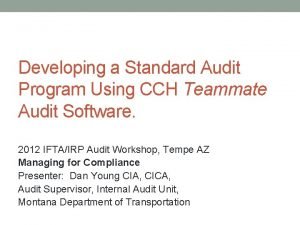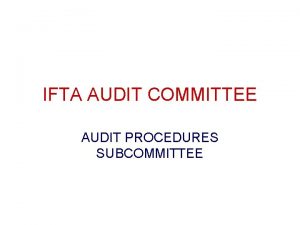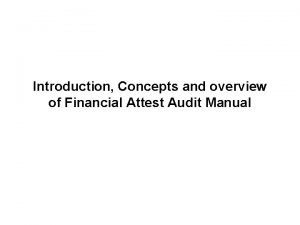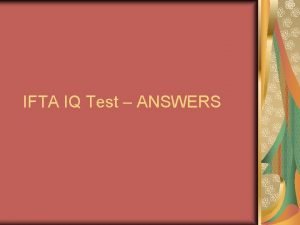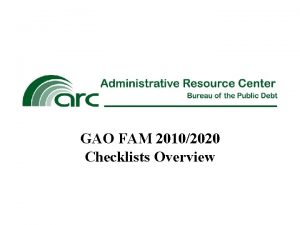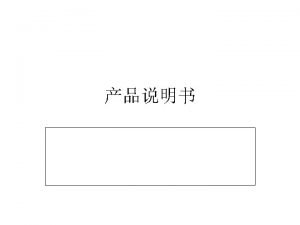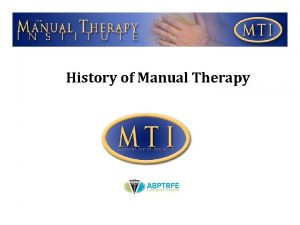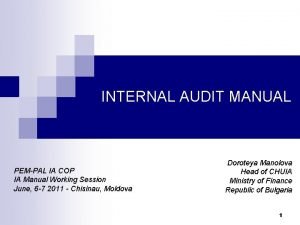Active IT Audit Manual What is IT audit








- Slides: 8

Active IT Audit Manual What is IT audit? An examination of how IT systems where implemented to ensure that they meet the organization’s business needs without compromising security, privacy, cost, and other critical business elements WGITA – IDI HANDBOOK ON IT AUDIT FOR SUPREME AUDIT INSTITUTIONS 15/09/2020 SAI Identification 1

Active IT Audit Manual IT and basic types of audit IT Audit is, thus, a broad term that pervades • Financial Audits - to assess the organization’s financial statements • Compliance Audits - evaluation of internal controls • Performance Audits - to assess whether the IT Systems meet the needs of the users and do not subject the entity to unnecessary risk ISSAI 5300 PARAGRAPH 3. 2 15/09/2020 SAI Identification 2

Active IT Audit Manual Objective The Active IT Audit Manual tool is based on the IT Audit Handbook and have the essential objective of helping the auditor to plan and conduct IT audits It provides the users with: • practical guidance • essential technical information, and • key audit questions 15/09/2020 SAI Identification 3

Active IT Audit Manual Content • Follows the general principles of auditing set out in the International Standards for Supreme Audit Institutions (ISSAI) • It provides an SAIs tailored working tool, which can be integrated with governance frameworks like the ISACA COBi. T model, pronouncements of the International Standards Organization (ISO), or standards, guides and manuals from some of the SAIs 15/09/2020 SAI Identification 4

Active IT Audit Manual Structure Centered in detailed description of different IT domains which will assist the IT auditors in identifying potential auditable areas • • IT Governance IT Operations Development and Acquisition Outsourcing Information Security Business Continuity and Disaster Recovery Application Controls 15/09/2020 SAI Identification 5

Active IT Audit Manual Scoping Start with planning on a risk assessment based selection We call it scoping through IT domain cascade: • identify a specific domain or a combination of domains • select the most critical areas and issues 15/09/2020 SAI Identification 6

Active IT Audit Manual Mechanics Extract based on the scope and objective, then On each level: Scope and objective • Analyze, validate and optimize each selection • Score relative importance within the extracted list • Develop a weighted list Domains Areas Use the information in related Audit Matrices at Criteria, Information Required and Analysis Method levels as work base and extend as necessary Issues Assertions Audit tests plan 1. Extract the audit steps 2. Check and adapt so that all key audit questions are covered 1. Identify the accountable and responsible roles 2. Establish what management claims are in place and if they are working well 15/09/2020 SAI Identification 7

Active IT Audit Manual To ensure that the audit process is preserved to enable subsequent verification, monitoring and share of the audit analysis procedures (ISSAI 100 PARAGRAPH 42), the tool produces: • A template activity plan, which includes the subject, criteria and scope is produced, as well • Audit matrices to help recording the findings during the IT audit conduct • A central point to help the auditor interpreting and judging against the audit questions previously raised at the planning stage • Possibility to share with the community in the project” Control Space of e. Government” (the CUBE), an EUROSAI initiative 15/09/2020 SAI Identification 8



